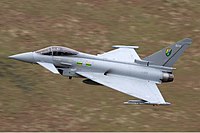
Photo from wikipedia
This study presents the radar-based characteristics and formation environment of supercells spawned by the tornadic landfalling Typhoon Mujigae in October 2015. More than 100 supercells were identified within a 24-hour… Click to show full abstract
This study presents the radar-based characteristics and formation environment of supercells spawned by the tornadic landfalling Typhoon Mujigae in October 2015. More than 100 supercells were identified within a 24-hour period around the time of the typhoon’s landfall, of which three were tornadic with a rotational intensity clearly stronger than those of non-tornadic supercells. The identified supercells were concentrated within a relatively small area in the northeast quadrant beyond 140 km from the typhoon center. These supercells were found more likely to form over flat topography and were difficult to maintain in mountainous regions. During the study period, more supercells formed offshore than onshore. The mesocyclones of these supercells were characterized by a small diameter, generally less than 5 km and a small depth generally less than 4 km above ground level. An environmental analysis revealed that the northeast quadrant had the most favorable conditions for the genesis of supercell in this typhoon case. The nondimensional supercell composite parameter (SCP) and entraining-SCP (E-SCP) were effective in separating supercellular from non-supercellular environments. Even though the atmosphere was characterized by an E-SCP/SCP value supportive of supercellular organization in the northeast quadrant, orography was an impeditive factor for the supercell development within tropical cyclones. These findings support the use of traditional parameters obtained from midlatitude supercells to assess supercell potential in a tropical cyclone envelope.
Journal Title: Advances in Atmospheric Sciences
Year Published: 2021
Link to full text (if available)
Share on Social Media: Sign Up to like & get
recommendations!